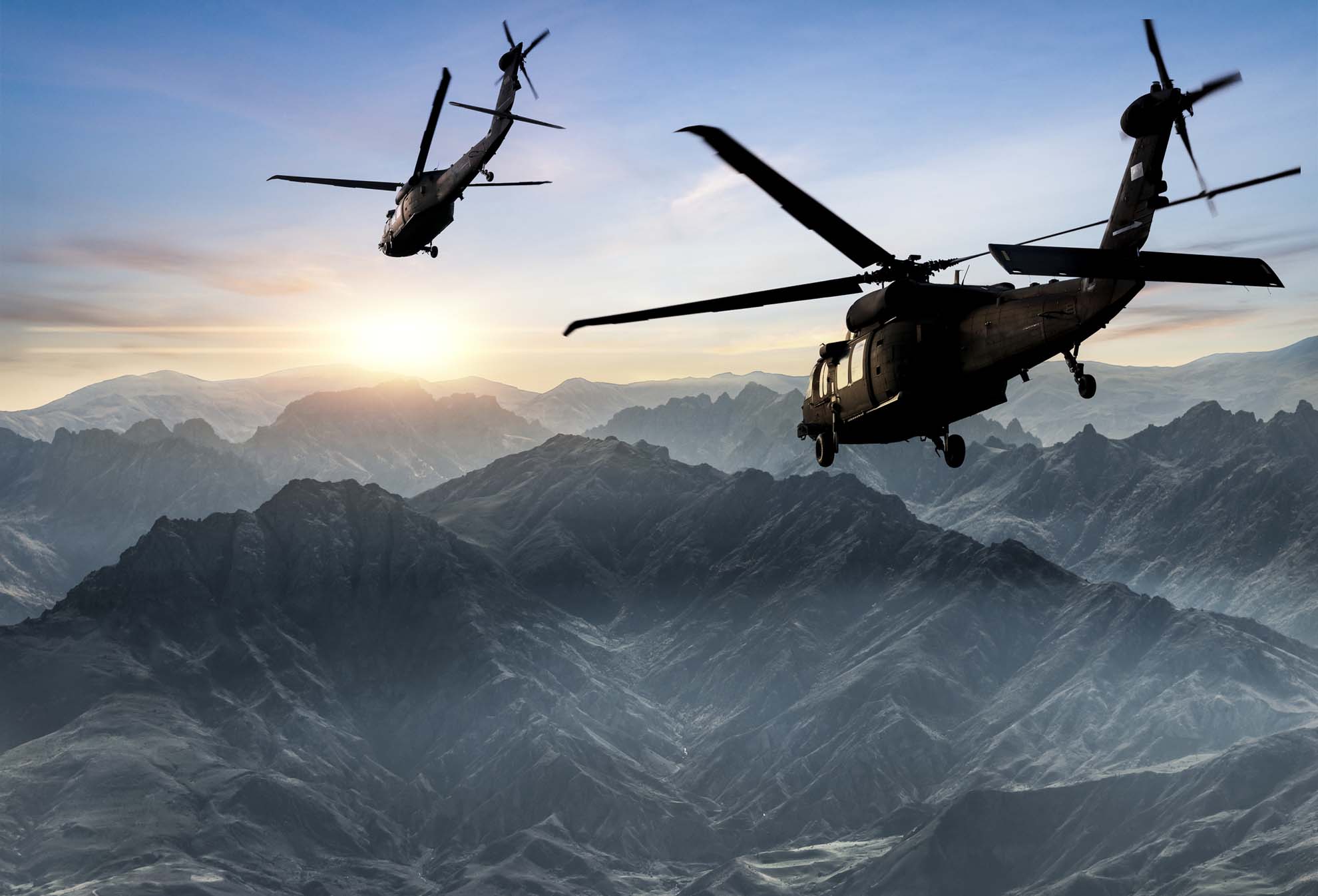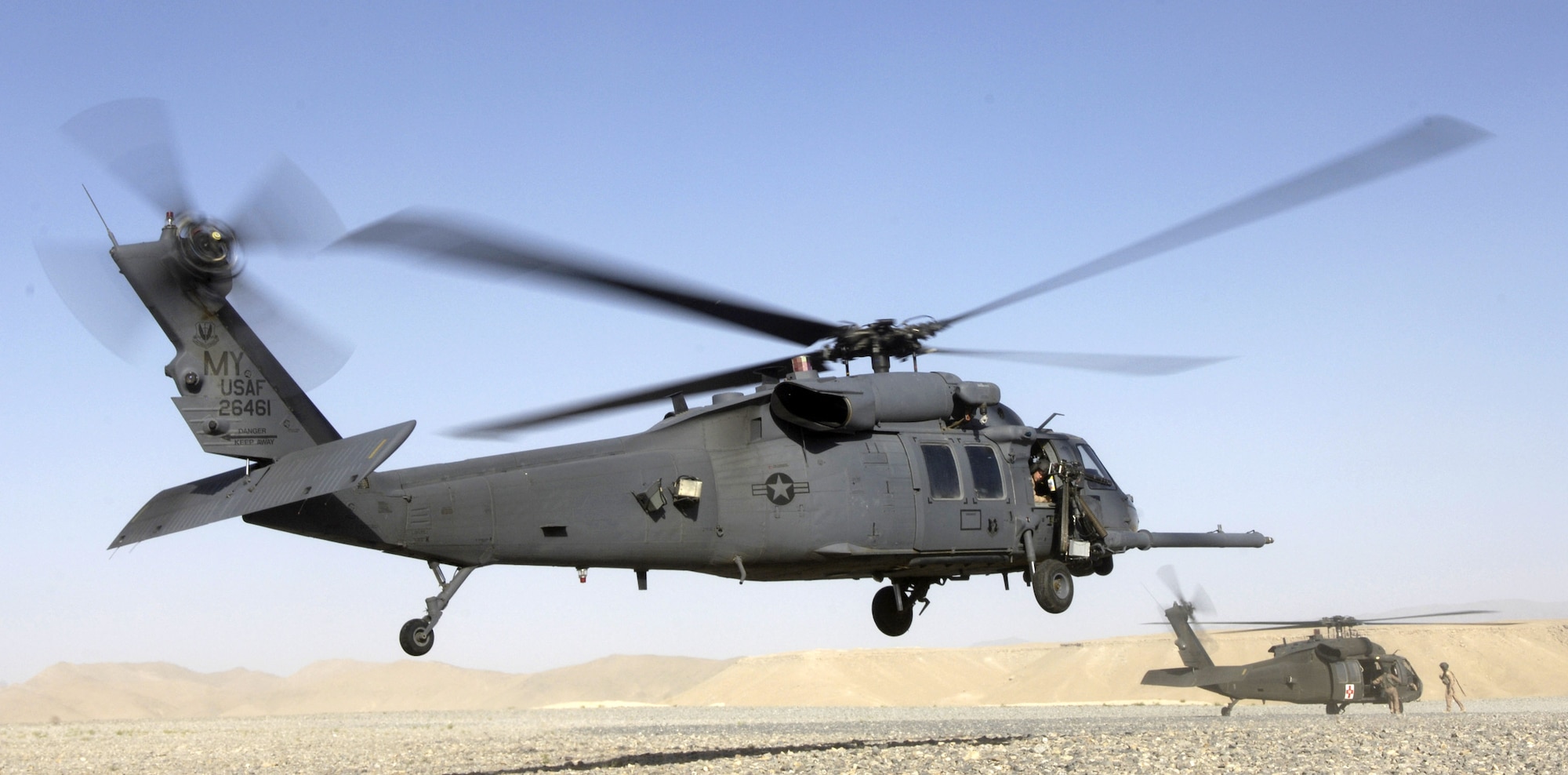Learn More About the Flexibility of the UH-60 Blackhawk
The UH-60 Blackhawk is an impressive example of modern-day military design, symbolizing versatility throughout a wide variety of operational contexts. From troop transportation to clinical discharge and reconnaissance missions, its style suits numerous roles while emphasizing fast release and adaptability. The advanced avionics and durable capabilities of the Blackhawk not just enhance its functional effectiveness in challenging environments but also extend its utility in humanitarian initiatives. Understanding its complex applications prompts a better examination of just how this helicopter remains to develop and affect military and noncombatant operations alike.
Background of the UH-60 Blackhawk
The UH-60 Blackhawk, a flexible utility helicopter, was developed in the late 1970s by Sikorsky Airplane to fulfill the U.S. Army's demand for a modern-day tactical transportation helicopter. This effort arose in feedback to the restrictions observed in the previous generation of helicopters during the Vietnam Battle. The U.S. Army looked for an aircraft that might perform a range of missions, consisting of army transportation, clinical emptying, and logistical support, while also displaying improved survivability and efficiency.
The Blackhawk was developed with advanced technology and design, featuring a twin-engine configuration, a four-bladed blades system, and a durable airframe. Its first trip happened in 1974, and it was formally presented right into service in 1979, swiftly ending up being a pivotal property for the U.S. military. The helicopter's flexibility allowed it to be used in various battle and altruistic operations, showcasing its effectiveness in varied environments and objectives.
Over the years, the UH-60 has gone through continual upgrades and adjustments, guaranteeing its relevance in contemporary war. Its heritage has solidified its condition as a cornerstone of armed forces aeronautics, reflecting a dedication to advancement and operational excellence.
Secret Functions and Specs
Frequently lauded for its design prowess, the UH-60 Blackhawk flaunts a variety of essential functions and specs that enhance its functional capacities. This versatile helicopter is powered by 2 General Electric T700-GE-701C engines, each efficient in creating 1,800 shaft horse power, enabling it to achieve an optimum cruise rate of about 150 knots.
The aircraft's unique layout includes a four-blade main rotor system and a four-blade tail rotor, contributing to premium maneuverability and stability. With an optimum takeoff weight of 22,000 pounds, the UH-60 can lug as much as 11 soldiers or equal cargo. Its innovative avionics collection supplies improved situational understanding and navigating, crucial for various mission profiles.
The Blackhawk includes a durable airframe created from innovative composite products, supplying increased toughness and resistance to tiny arms fire. UH-60 Blackhawk. In addition, the helicopter is furnished with an electronic fly-by-wire control system, enhancing responsiveness and decreasing pilot workload. With an array of about 600 maritime miles and the capability to operate in diverse settings, the UH-60 Blackhawk continues to be a critical asset in modern-day armed forces operations
Military Applications
With its innovative attributes and requirements, the UH-60 Blackhawk has actually ended up being a foundation of military operations throughout the globe. Developed for convenience, it meets a broad range of roles ranging from army transport to medical emptying. The helicopter's capability to operate in varied atmospheres-- whether in battle zone or tough terrains-- guarantees it remains a crucial property for modern army forces.
The UH-60's durable design enables the transportation of up to 11 soldiers, supporting fast release during critical objectives. Its advanced avionics and navigation systems boost situational understanding, making it possible for pilots to carry out complex procedures also in unfavorable weather. The helicopter is furnished with protective systems to safeguard versus hazards, making sure the safety and security of personnel onboard.

Altruist Goals

Altruistic goals often count on the UH-60 Blackhawk for its unequaled flexibility and quick reaction abilities. This multi-role helicopter has verified invaluable in different circumstances, including calamity relief, medical discharges, and logistics support in inaccessible or remote areas - UH-60 Blackhawk. Its ability to move workers and products quickly enables timely interventions throughout situations, significantly improving the performance of altruistic operations
The Blackhawk's sophisticated avionics and durable layout allow it to operate in challenging atmospheres, such as negative check this site out weather or rugged terrains. Furnished with lifting systems and clinical evacuation capabilities, the helicopter can obtain damaged individuals from hard-to-reach places, making sure punctual clinical focus. Furthermore, its ability to rapidly deploy aid supplies, including food, water, and important devices, makes it a vital possession in massive alleviation initiatives.
Furthermore, the UH-60 Blackhawk's flexibility enables for different configurations tailored to certain goal demands, whether it includes transferring emergency responders or supplying essential sources to affected populations. Its functional background in humanitarian objectives emphasizes the airplane's important function in alleviating and saving lives suffering throughout altruistic situations and all-natural disasters, showcasing its enduring dedication to supporting global alleviation initiatives.
Future of the Blackhawk
The future of the UH-60 Blackhawk appears encouraging as improvements in modern technology and progressing mission needs shape its ongoing importance in armed forces and civilian operations. As militaries around the globe look for to update their fleets, the Blackhawk is undertaking upgrades that boost its abilities, my blog consisting of enhanced avionics, progressed communication systems, and boosted payload abilities.
The combination of unmanned systems and artificial intelligence is positioned to revolutionize procedures. Future variants may incorporate self-governing trip capacities, enabling raised operational adaptability and reduced danger to personnel during high-threat goals. Additionally, hybrid-electric propulsion systems are being checked out to boost fuel effectiveness and lower the environmental footprint of army operations.
International partnerships and export chances are additionally broadening the Blackhawk's international impact. As nations spend in improving their air movement abilities, the Blackhawk's convenience makes it a positive selection for various roles, from troop transportation to clinical discharge and search-and-rescue operations.
Conclusion
The UH-60 Blackhawk exhibits versatility in military aviation, effectively fulfilling roles varying from army transportation to clinical emptying and reconnaissance. Its sophisticated innovation and versatility allow successful operations in varied atmospheres and objective situations. The aircraft's contributions extend beyond armed forces applications, playing a substantial function in humanitarian efforts and disaster response. As functional needs progress, the ongoing advancement and integration of the Blackhawk will guarantee its importance and effectiveness in dealing with future obstacles in both army and noncombatant contexts.

With its innovative attributes and specifications, the UH-60 Blackhawk has become a foundation of armed forces operations across the globe. As armed forces methods advance, the UH-60 Blackhawk proceeds to play a vital role in enhancing operational effectiveness and ensuring mission success across the theaters of interaction.
Altruistic objectives typically depend on the UH-60 Blackhawk for its unequaled adaptability and fast reaction capabilities. UH-60 Blackhawk.The UH-60 Blackhawk exhibits adaptability in armed forces aviation, effectively fulfilling duties varying from troop transport to clinical emptying and reconnaissance